The use of barn doors on interior doorways has become a hot design trend in recent years. They add rustic charm to a space, and they’re just fun to use!
However, despite the quaint country appeal and the novelty, there is one downside to using barn doors to conceal interior doorways: a lot of noise travels through them.
If you have a barn door in your home that you love the look of but the noise that penetrates through it is driving you insane, you’re probably wondering if there’s a way to soundproof them.
The good news is that yes, there are some simple and inexpensive ways that you can soundproof a barn door. By using a combination of the methods discussed below, you can eliminate obtrusive noise without giving up the aesthetic appeal of your barn door.
Before we discuss the different methods that can be used to soundproof a barn door, you first need to understand the different types of sound.
Most people assume that all noise is the same; however, that’s not the case. In reality, there are two different types of sound. Both types occur as a result of the transmission of soundwaves; however, the medium that those soundwaves are transmitted through differs.
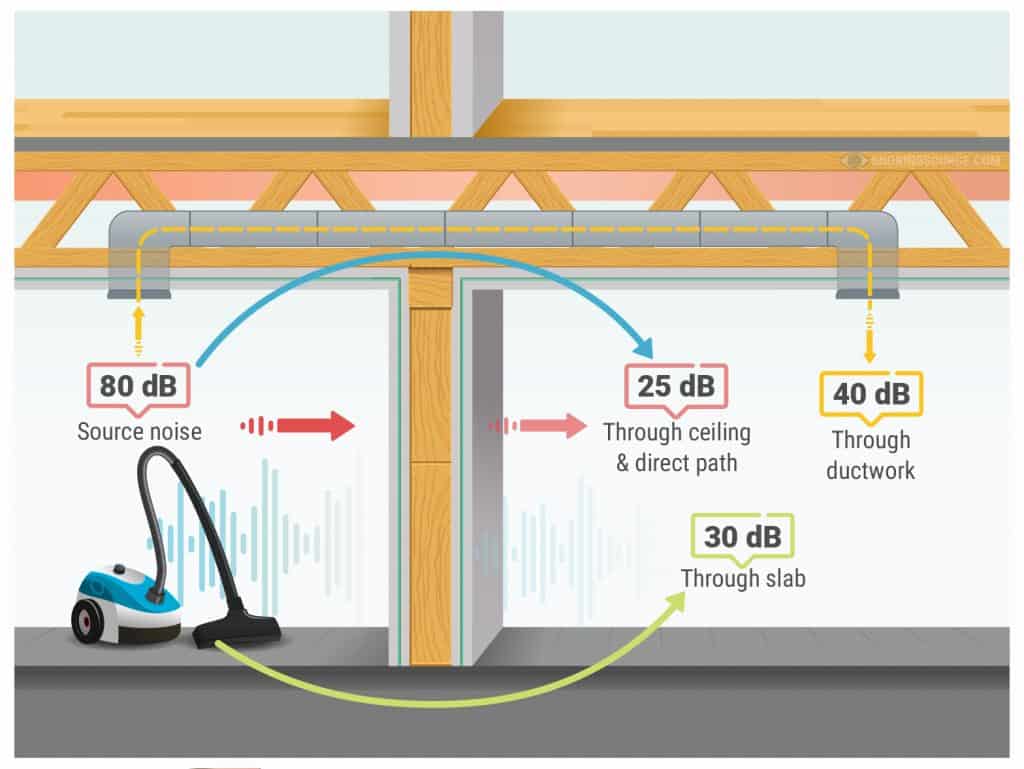
The first – and the most commonly known – type of sound is known as airborne sound; think voices, a TV, or a radio that you can hear through a wall, a ceiling, or your barn door. As the name indicates, with airborne noise, the medium that soundwaves are transmitted through is air.
When something produces a noise – a TV, for example – the soundwaves are picked up by and travel through the air until they crash into a solid object, such as your barn door. That collision causes a vibration, and the soundwaves pass through the door and into the adjoining room. This is why it sounds like people speaking or a radio playing in the room next to you sound as if they are in the same space.
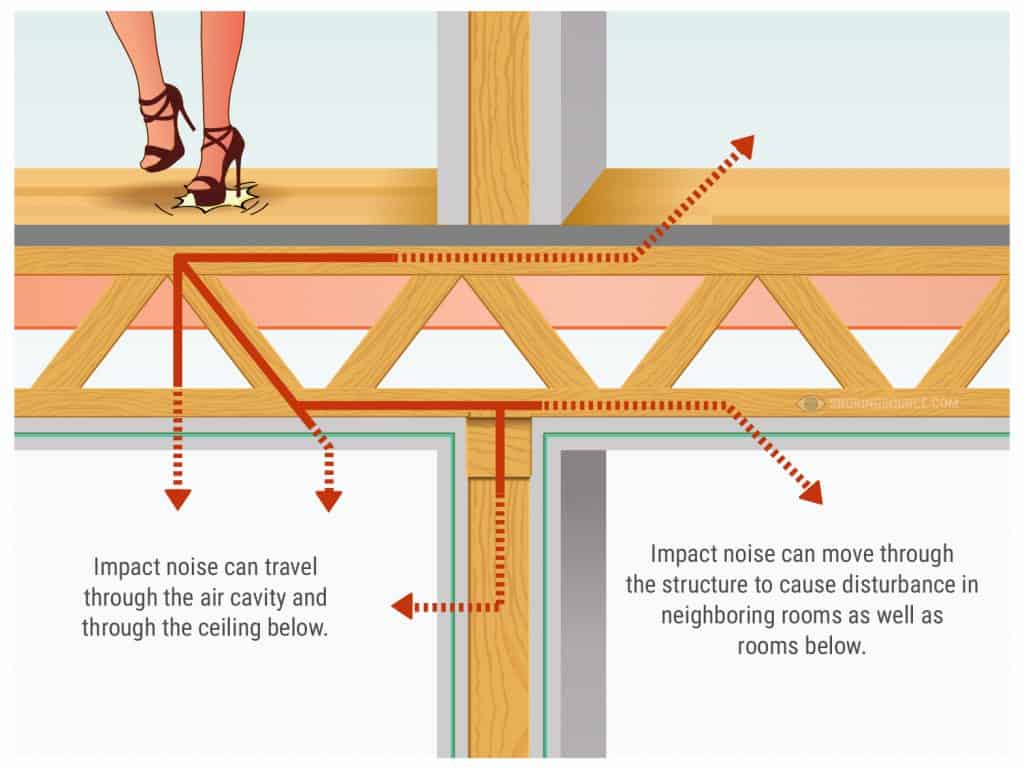
The second lesser known type of noise – but nonetheless obtrusive – is impact noise. Also known as structure-borne noise, impact noise occurs when an object impacts with a structure; feet hitting a floor, a knock on a door, or a ball thrown against a wall, for instance.
The impact of the object creates soundwaves, which causes a vibration in the structure. The soundwaves then travel through the structure and can be heard on the opposite side. In other words, the structure, as opposed to air, serves as the medium on which soundwaves travel.
There are quite a few techniques that you can use to soundproof a barn door. Keep in mind, however, that while these methods can certainly help to drastically reduce the level of sound that travels through the door, it’s not likely that they will completely eliminate all noise. With that said, using a combination of techniques will yield the best results.
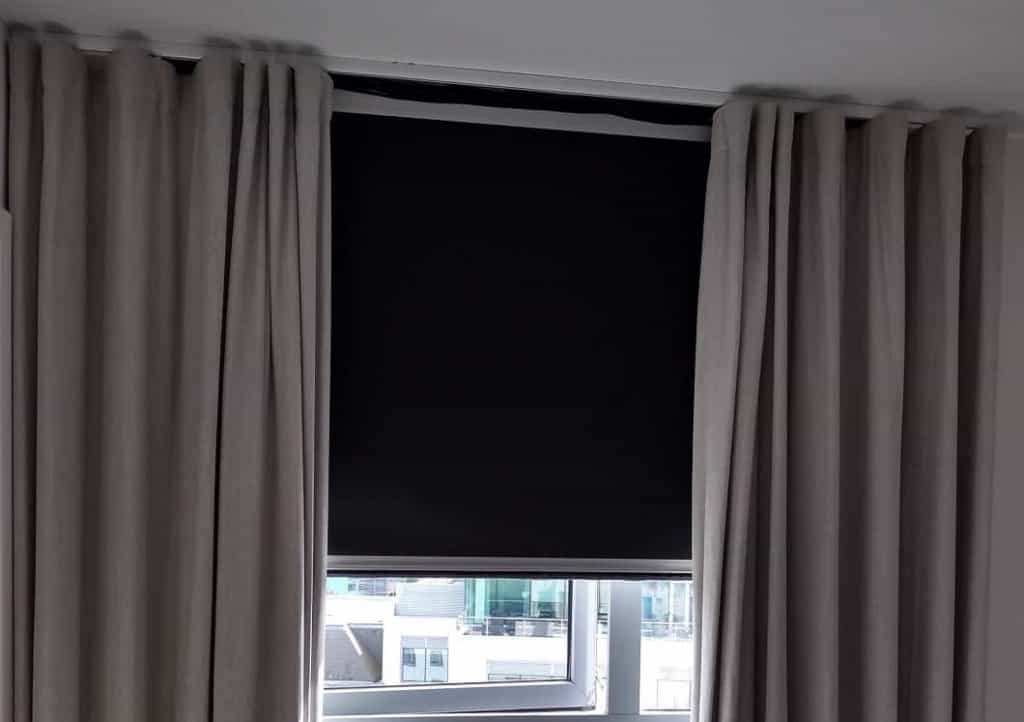
A simple way to prevent unwanted noise from traveling through your barn door and into the room is by hanging soundproof curtains.
Soundproof curtains are made of dense fabrics that help to absorb soundwaves, thus slowing their transmission through your barn door. They are available in an assortment of sizes, colors, textures, and patterns, so you should have no trouble finding an option that works with the design of the room.
To ensure you’re purchasing the appropriate size, measure the door before purchasing the curtains. If the door is larger than the sizes that are available, you can hang multiple panels side-by-side. To maximize the sound absorbing qualities, you may want to consider doubling up on the panels; that is, hang one panel over another one.
To hang the curtains, attach a curtain rod over the top of the barn door; if you’re doubling up on the panels, hang a double curtain rod. Once in place, hang the curtains from the rod. When you want to block out sound, pull the curtains closed; when noise isn’t a concern or you want to exit or enter the door, simply slide the curtains to the side.
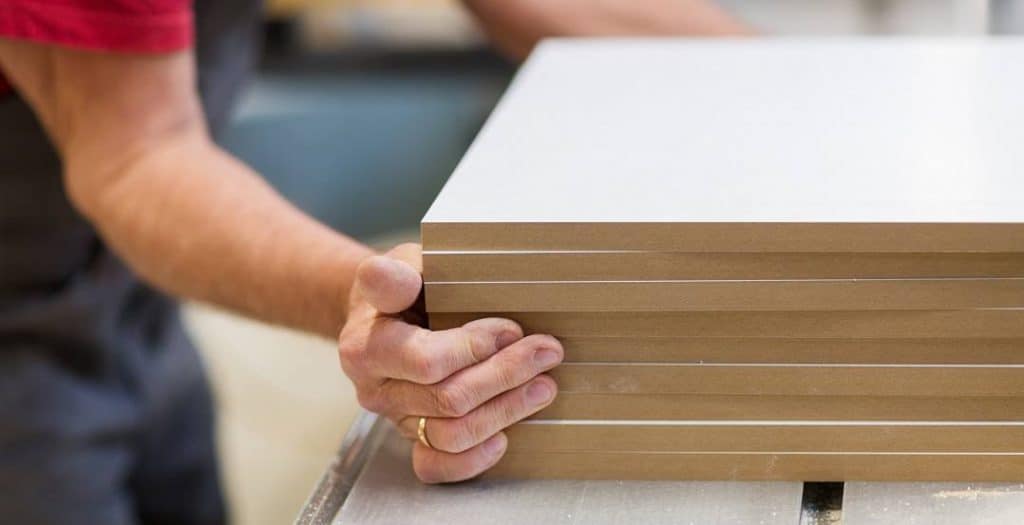
The denser a structure is, the less sound will penetrate it. As soundwaves hit into the door, they’ll disperse and weaken, hence why a thicker door means less noise transmission.
To improve the density of your barn door, attach more wood to the surface. Cut a piece of medium density fiberboard (MDF) or plywood so that it’s the same size as the barn door. For maximum effect, MDF is the better option, as it has better soundproofing capabilities; though plywood can certain help to block out soundwaves.
Once the panel is cut, apply a generous layer of Green Glue Noiseproofing Compound to the back of it and position it over the barn door. To ensure security, use nails or screws around the perimeter of the panel to firmly attach it to the door. You can then sand and stain or paint the panel to improve its aesthetic appeal.
It is very important to mention that prior to cutting the MDF or plywood panel, make sure you take extremely accurate measurements of the door. The size of the panel needs to be precise, otherwise the function of the door will be jeopardized, as will the overall look.
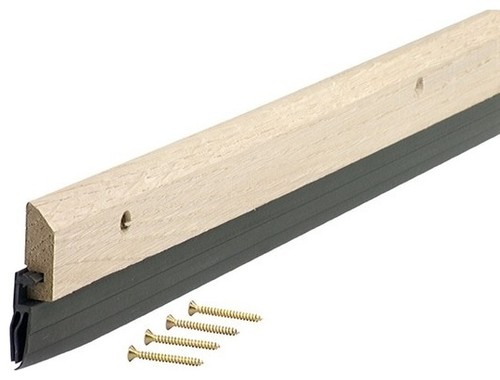
One of the reasons why all doors are infamous for sound transmission is the large gap that lies underneath them; barn doors are no exception. Soundwaves can easily travel through that gap and enter the adjoining room.
To limit the amount of noise that filters through the door, cover the gap. To do so, you can attach a door sweep to the bottom of the door.
Do make sure you measure the bottom of the door so that you purchase a door sweep that will completely cover the gap. A non-permanent alternative would be to roll up a piece of thick fabric and place it in front of the gap when the door is closed.
Not only will concealing the gap along the bottom of the door help to reduce unwanted noise transfer, but it can also eliminate drafts, thereby improving the comfort of the space.
While a barn door may be an attractive feature, it can also be obnoxious; namely because of the sound that travels through it. By using one – or a combination of – the above-mentioned soundproofing techniques, you can drastically reduce the amount of noise that penetrates through the structure.

Snoringsource.com is a participant in the Amazon Services LLC Associates Program, an affiliate advertising program designed to provide a means for website owners to earn advertising fees by advertising and linking to amazon(.com, .co.uk, .ca etc) and any other website that may be affiliated with Amazon Service LLC Associates Program.